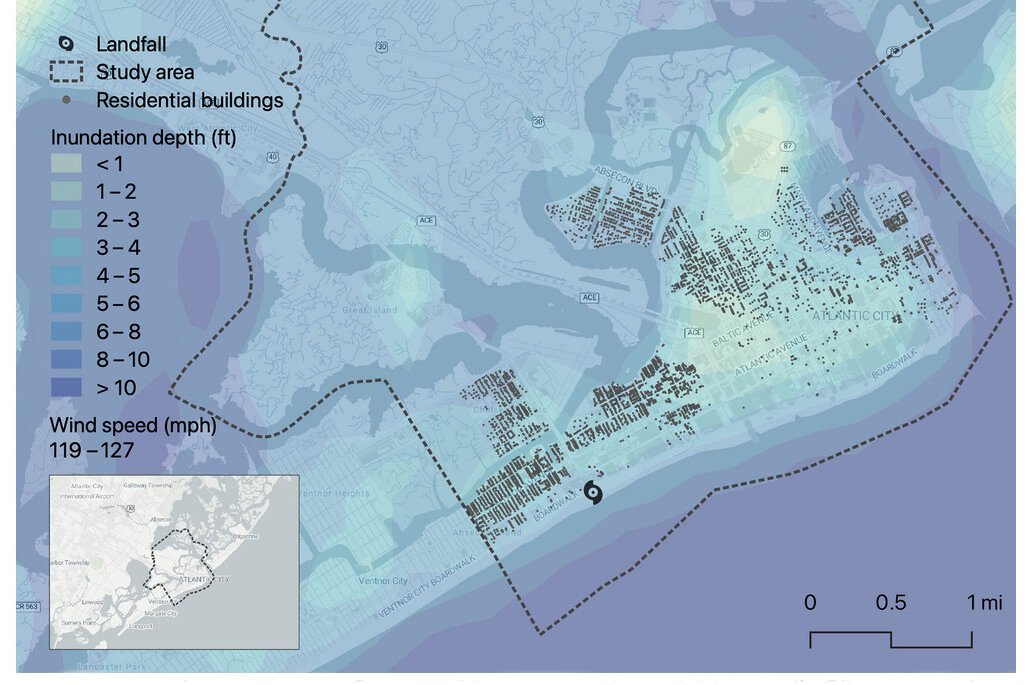A recent study introduces predictive models to estimate how long households are displaced after disasters, utilizing data from the United States Household Pulse Survey. The authors used machine learning techniques to develop models based on classification trees and random forest approaches to forecast displacement duration considering physical damage to homes and socioeconomic characteristics of households. The study highlights that considering both physical and socioeconomic factors significantly improves the estimates and enables differentiation between short-term, long-term, and permanent displacement outcomes. The authors demonstrated the application of their random forest model in an illustrative disaster risk analysis using SimCenter’s Atlantic City hurricane testbed data and R2D regional risk simulation tool.

Map of the scenario risk model: A category 3 hurricane with landfall in
Atlantic City, NJ. (Paul et al.)
The study demonstrates the broad geographic and temporal scope of a community-level analysis that needs to be considered to provide a comprehensive understanding of the impact of disasters on individual households and communities.
“It is exciting to see the Atlantic City testbed data re-used and enhanced with tenure information in this research,” observed Adam Zsarnóczay, SimCenter Associate Director of Research Outreach. “This study is a great example of leveraging the streamlined Hazus loss assessment capabilities in our R2D tool and complementing them with new ideas that move the field forward. By utilizing these resources for a regional study, researchers can move beyond individual household analysis to capture broader, region-wide dynamics.”
Reference: Paul, N., Galasso, C., Baker, J., & Silva, V. (2025). A predictive model for household displacement duration after disasters. Risk Analysis, 1–29. https://doi.org/10.1111/risa.17710
Additional publications citing SimCenter software are located on the SimCenter website at Knowledge Hub > External Publications.